Better sleep often starts with something simple. For many people, that means keeping the mouth gently closed and letting the nose do the breathing at night. A small elastic strip called Myotape is designed to nudge that habit into place, and the results can be surprisingly wide ranging, from quieter nights to a calmer nervous system.
None of this needs to feel restrictive or risky. With the right preparation and a clear plan, the method is straightforward.
Below, you will find what it is, why nasal breathing matters, how the tape works, who it may suit, who should avoid it, and practical steps to get started.
What Myotape Is
Myotape is a soft, elastic adhesive strip that sits around the lips in a ring-like shape. It does not seal the mouth shut. Instead, it draws the lips together and gives a gentle cue to keep them closed. If you need to speak or cough, you can part the lips.
Several features stand out:
- It surrounds the lips rather than covering them, which leaves a central gap.
- The elastic fabric provides mild tension that encourages a lip seal without pressure.
- Most versions use a hypoallergenic adhesive, and are latex free.
- There are adult and child sizes, though use in children requires supervision from a clinician or qualified therapist.
This design is different to traditional mouth tape that fully closes the lips. That difference matters for comfort, safety and ease of adoption.
Why Nasal Breathing At Night Matters
Breathing through the nose is not just a preference. It changes airflow, chemistry and muscle activation in ways that can influence sleep quality.
- Air filtration and conditioning. Nasal passages warm, humidify and filter incoming air. This reduces dryness in the mouth and throat, often easing morning irritation.
- Nitric oxide production. The paranasal sinuses release small amounts of nitric oxide into inhaled air. This gas supports local blood flow in the lungs and can improve oxygen transfer.
- Diaphragm first. Nasal breathing encourages a more diaphragm-led pattern, which can stabilise the upper airway and reduce the risk of soft tissues vibrating during sleep.
- Subtle carbon dioxide balance. Breathing rate often settles with nasal breathing. Many people find less variability and fewer arousals.
- Oral health. Less mouth breathing means less dryness, which supports saliva’s natural defence against cavities and gum irritation.
Research on mouth taping is growing but still modest. Small clinical studies and case reports suggest reductions in snoring, less morning dryness and improved adherence to other therapies. Myotape’s specific design has not been compared in large head-to-head trials with other approaches, so outcomes can vary. That said, the physiology of nasal breathing is well established, and many users report tangible improvements when they move away from an open mouth at night.
How It Works
Think of Myotape as a gentle trainer for the lips and the muscles around them.
- Mild elastic tension encourages a soft lip seal.
- Tactile feedback reminds you to keep the tongue resting on the palate rather than falling back.
- The pattern, repeated over time, can help retrain a mouth-breathing habit.
During sleep, slack jaw and open lips can set the stage for snoring and fragmented breaths. By supporting the lips to stay together, airflow is redirected through the nose. This change can reduce noise, stabilise breathing and support more continuous sleep cycles.
It is not a cure for sleep apnoea. It can, however, reduce mouth leaks and dry mouth, and it may help other therapies work better.
Who Might Benefit
- People who wake with a dry mouth or sore throat
- Habitual mouth breathers trying to shift towards nasal breathing
- Snorers who find side sleeping and nasal care help but want more support
- CPAP users who struggle with mouth leaks or dry mouth
- Those with asthma or allergies who tolerate nasal breathing once congestion is addressed
- Parents guided by a clinician for a child with open-mouth posture or persistent snoring
A conservative trial at home suits many adults who can breathe well through the nose. If in doubt, speak with a GP, dentist with sleep training, or a sleep physiologist.
Who Should Avoid It Or Seek Advice First
Safety comes first. The tape is not for everyone.
- Untreated moderate to severe obstructive sleep apnoea
- Known nasal obstruction, for example polyps, severe deviated septum, chronic congestion that does not clear
- Recent nasal, oral or facial surgery
- Significant skin conditions or adhesive allergies in the area of application
- Nausea, reflux with frequent regurgitation, or a high risk of vomiting
- Heavy alcohol use before bed or night-time sedatives that reduce arousal responses
- Severe anxiety about any facial covering
- Children, unless a clinician is involved and a parent supervises
If you use CPAP, check with your sleep clinic before adding tape. It can work well, especially to reduce leaks, but you want to confirm it suits your setup.
Getting Started: A Practical Guide
Start slow. Treat it like training.
- Check nasal breathing first
- Sit quietly and breathe through your nose for a few minutes. If you feel clear and comfortable, proceed. If you cannot, address congestion first.
- Choose the right size
- Myotape comes in sizes. The strip should sit around the lips without stretching too tight. If you have facial hair, a larger size may help contact the skin.
- Patch test for skin
- Place a small piece on your inner forearm for several hours to check for redness or irritation.
- Prepare the skin
- Wash and dry the face. Avoid heavy creams or oils near the application area, as adhesive may not grip well.
- Apply a light, non-greasy lip balm earlier in the evening if your lips tend to crack. Wipe any residue from the surrounding skin before taping.
- Application
- Bring lips together lightly. Do not clench.
- Remove the backing and align the oval with the mouth opening.
- Place the tape so it surrounds the lips and sits flat without creases.
- If needed, press lightly at four points, top, bottom, left, right, to ensure contact.
- Start during the day
- Wear for 10 to 15 minutes while reading or working at a desk. Build confidence. Then try a short nap.
- Move to night use
- Begin with a single night. Track how you feel in the morning. Increase to several nights a week.
- If anxiety rises, pause and return to shorter daytime sessions.
- Removal
- Support the skin with one hand and peel back slowly with the other. Warm water can help release the adhesive.
- Clean the skin and apply a light moisturiser away from the lips.
- Reuse
- Most tapes are single use for hygiene and adhesive reasons.
Signs of a good session include less snoring reported by a partner, fewer mouth leaks if you use CPAP, and less dryness on waking.
Working Around A Blocked Nose
Comfortable nasal breathing is a prerequisite. If congestion is frequent, set up a simple routine.
- Saline rinse or spray in the early evening
- Allergen control in the bedroom, for example encasements for bedding, regular washing, keeping pets out of the room
- A warm shower before bed to humidify nasal passages
- A nasal dilator or gentle external nasal strip for added patency
- Discuss a steroid nasal spray with your GP if inflammation is chronic
- Simple breathing drills that encourage nasal flow, for example light nose-only walks or short breath holds within a comfortable range
If you still cannot breathe through your nose for extended periods, hold off on any tape until the cause is treated.
Combining With Other Therapies
Myotape often works best as part of a broader plan.
- Myofunctional therapy, targeted exercises for the tongue and orofacial muscles, guided by a trained therapist
- CPAP or APAP for sleep apnoea, with tape to reduce mouth leaks
- Positional strategies, for example side sleeping, which can cut snoring in many people
- Weight management and regular activity, which reduce airway collapsibility
- Dental sleep devices supplied by a trained dentist when apnoea or snoring persists
Coordination matters. Let your clinicians know you are adding tape so they can tailor advice.
Myotape Compared With Other Options
Here is a quick comparison to help match the tool to the situation.
| Option | How it works | Mouth still usable in a pinch | Pros | Cons | Best for |
|---|---|---|---|---|---|
| Myotape (ring around lips) | Elastic strip gently brings lips together, encourages nasal breathing | Yes, central gap allows speaking or coughing | Comfortable, less claustrophobic, supports habit change | Adhesive tolerance varies, less forceful in heavy mouth breathing | Habit training, dry mouth, snoring with mild mouth opening |
| Full lip-seal mouth tape | Adhesive seals lips directly | Limited, usually no unless pulled off | Strong seal, reduces mouth leaks with CPAP | Can feel restrictive, not suitable for anxiety or frequent nausea | CPAP users with persistent mouth leaks who tolerate tape well |
| Chin strap | Fabric strap supports jaw closure | Yes | No adhesives, works with beards, reusable | Can slip, may push jaw backward in some users | People who dislike adhesives or have sensitive skin |
| External nasal strips or internal dilators | Open nasal passages mechanically | Yes | Improves nasal airflow, over the counter, simple | Does not address mouth posture directly | Congestion, narrow nasal valves, preparation before tape |
| Myofunctional therapy | Exercises to strengthen tongue and lips | Yes | Targets root causes, no devices long term | Requires coaching and time | People seeking lasting change or with orofacial dysfunction |
Many combine one or more methods, for example Myotape plus a nasal strip and allergy care.
Tips For Facial Hair, Sensitive Skin And Heat
- Facial hair. Aim for skin contact just around the lips. Trim a narrow margin if possible. Choose a size that avoids the thicker parts of the beard.
- Sensitive skin. Shorter wear times at first. Remove slowly. Consider barrier wipes made for adhesives on medical dressings, though these can reduce stick.
- Warm climates. Store tape in a cool place. Oils from sunscreen reduce adhesion, so clean the area thoroughly before application.
Common Questions
Does it feel strange at first?
- A little. Daytime practice helps. Most people adjust within a few sessions.
What if I need to breathe through my mouth in the night?
- With Myotape you can part your lips. If you feel unwell, remove it. Keep water by the bed while you experiment during the first few nights.
Will it stop snoring completely?
- Some people quieten noticeably. Others see a partial change or none at all. Snoring often has several causes, including nasal patency, tongue position, jaw shape and sleep position.
Can children use it?
- Only under the guidance of a clinician who works with paediatric breathing and sleep. A parent should supervise every session.
Is it safe with CPAP?
- Often yes, and it can reduce dry mouth and leaks. Confirm with your clinic. Try it during a daytime nap while wearing your mask to check comfort and alarms.
What about cost and shelf life?
- Most tapes are single use. Store in a cool, dry place to maintain adhesive quality. Many people plan for a monthly supply.
Will it pull at my skin?
- Apply to clean, dry skin. Remove slowly while supporting the skin with the other hand. Applying warm water can help.
Measuring Results And Staying Consistent
A few simple metrics can keep you honest and motivated.
- Morning dryness, scored from 0 to 10
- Partner feedback on snoring frequency and volume
- Recordings from a snore app
- CPAP leak reports if you use a machine
- Daytime sleepiness ratings, for example the Epworth scale
- Oral health markers, fewer night-time water trips, fewer mouth ulcers
Track for two to four weeks. Look for steady trends rather than single-night ups and downs. If nothing changes, tweak the plan by improving nasal care, changing sleep position, or seeking an assessment for hidden contributors like reflux or apnoea.
A Short Routine You Can Try Tonight
- Two hours before bed, rinse the nose with saline and keep the bedroom cool and clean.
- Fifteen minutes before bed, practise five slow nose-only breaths, light and quiet, as a cue for the body.
- Apply Myotape with lips gently together. Lie on your side with a supportive pillow.
- Keep a pair of blunt scissors and a glass of water by the bed if it helps you feel more relaxed in the early stages.
- In the morning, remove the tape slowly and rinse the face with warm water.
Consistency tends to beat intensity. Small nightly wins add up.
When To Seek Extra Help
If you experience choking, frequent gasping, witnessed apnoeas, or loud snoring that carries through walls, book a sleep assessment. Myotape will not treat moderate to severe sleep apnoea on its own. A clinician can advise on testing and the right mix of therapy. Dental specialists can assess jaw structure and tongue posture. Allergy or ENT teams can address nasal issues that make night breathing difficult.
Material And Care Points
- Adhesive type. Look for hypoallergenic, latex free products.
- Storage. Keep sealed and away from heat to protect the adhesive.
- Skin care. Avoid petroleum jelly before application since it reduces grip. After removal, use a light moisturiser.
- Sustainability. Single-use products add waste. If this concerns you, consider combining tape for a few weeks while you train the habit, then taper use as nasal breathing sticks.
Bringing It Together
Moving from night-time mouth breathing to steady nasal breathing is a small shift with outsize influence on sleep, mood and oral comfort. Myotape offers a gentle nudge in the right direction, without fully closing the mouth, which many find easier to adopt. Pair it with sensible nasal care, consistent sleep habits and, when needed, clinical support.
The first step is simple. Check your nose, test a strip during the day, and build from there. Quiet, effortless nights often follow.











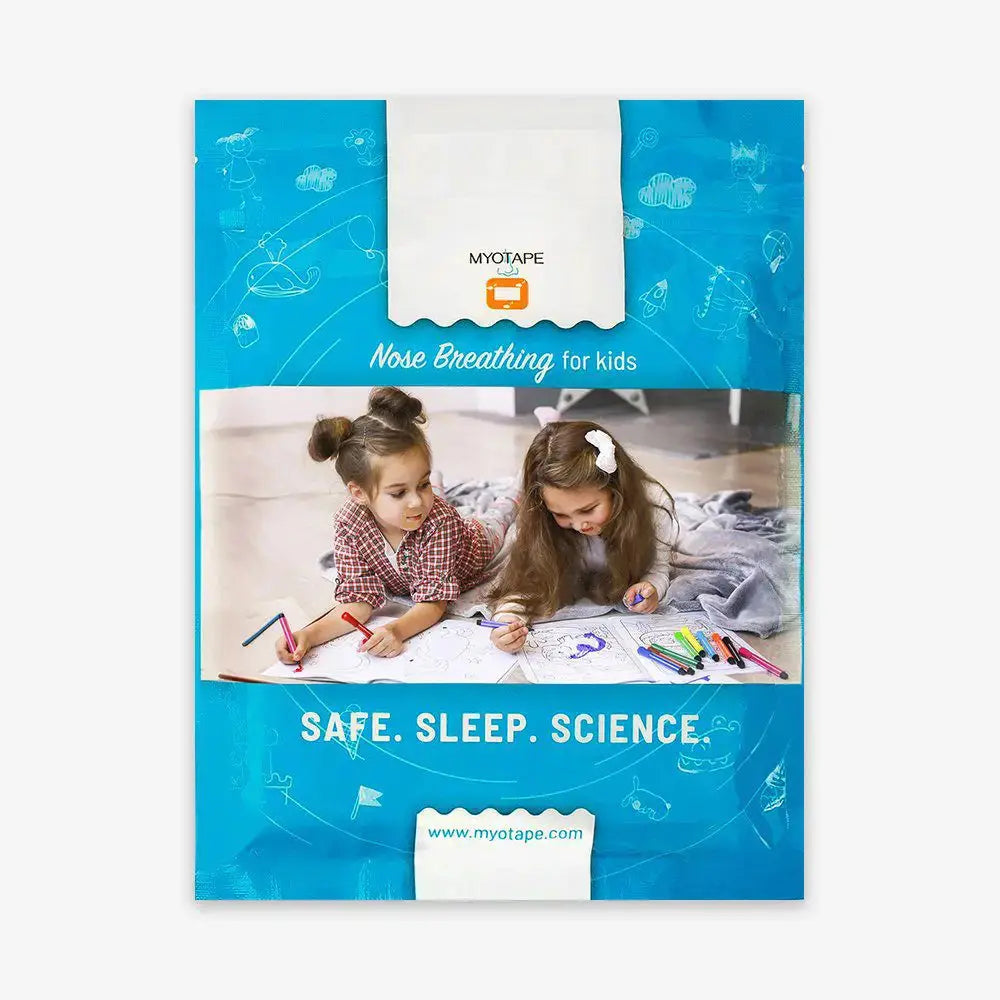
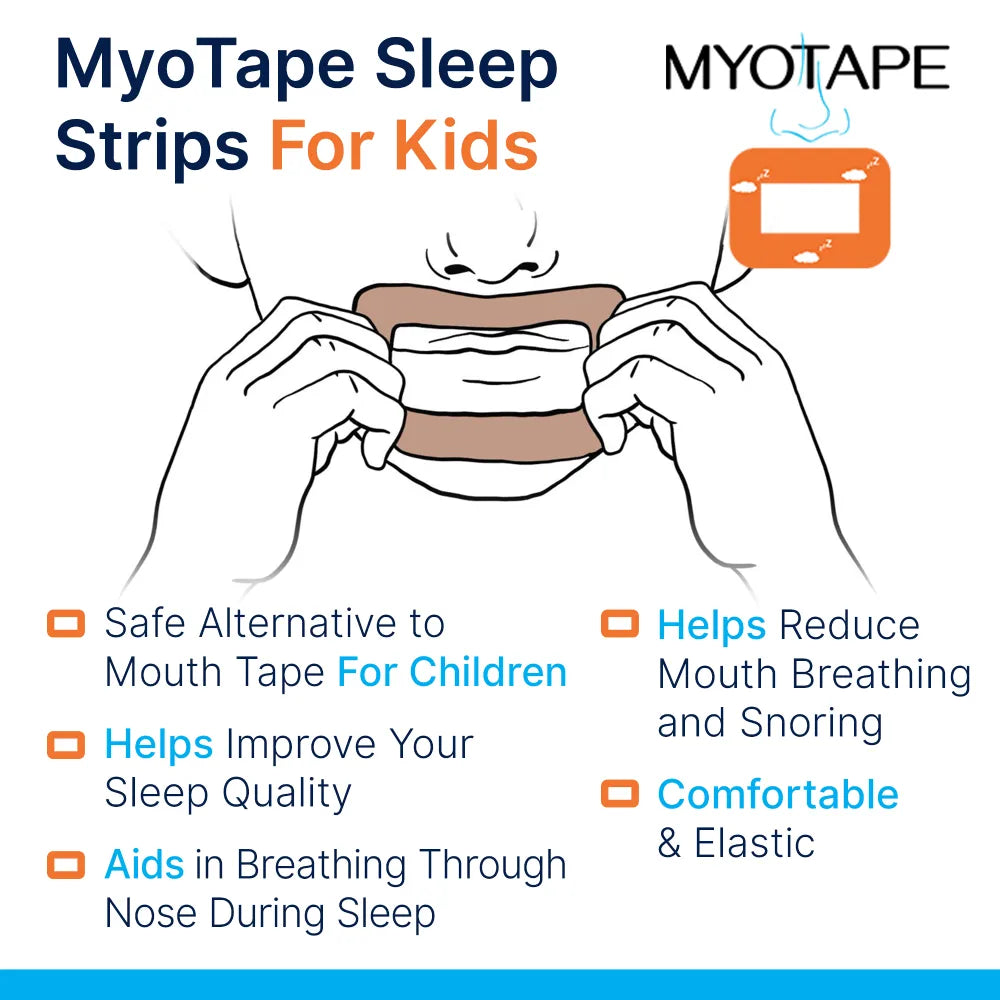
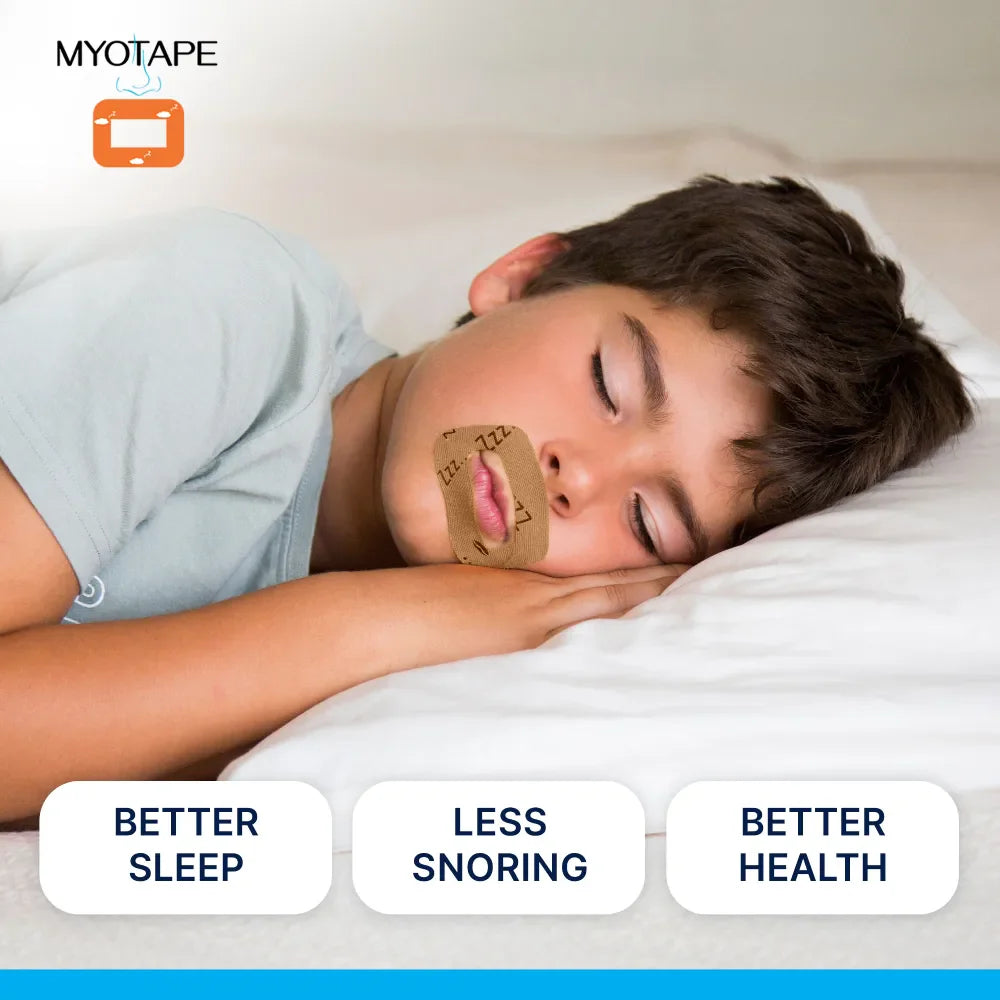
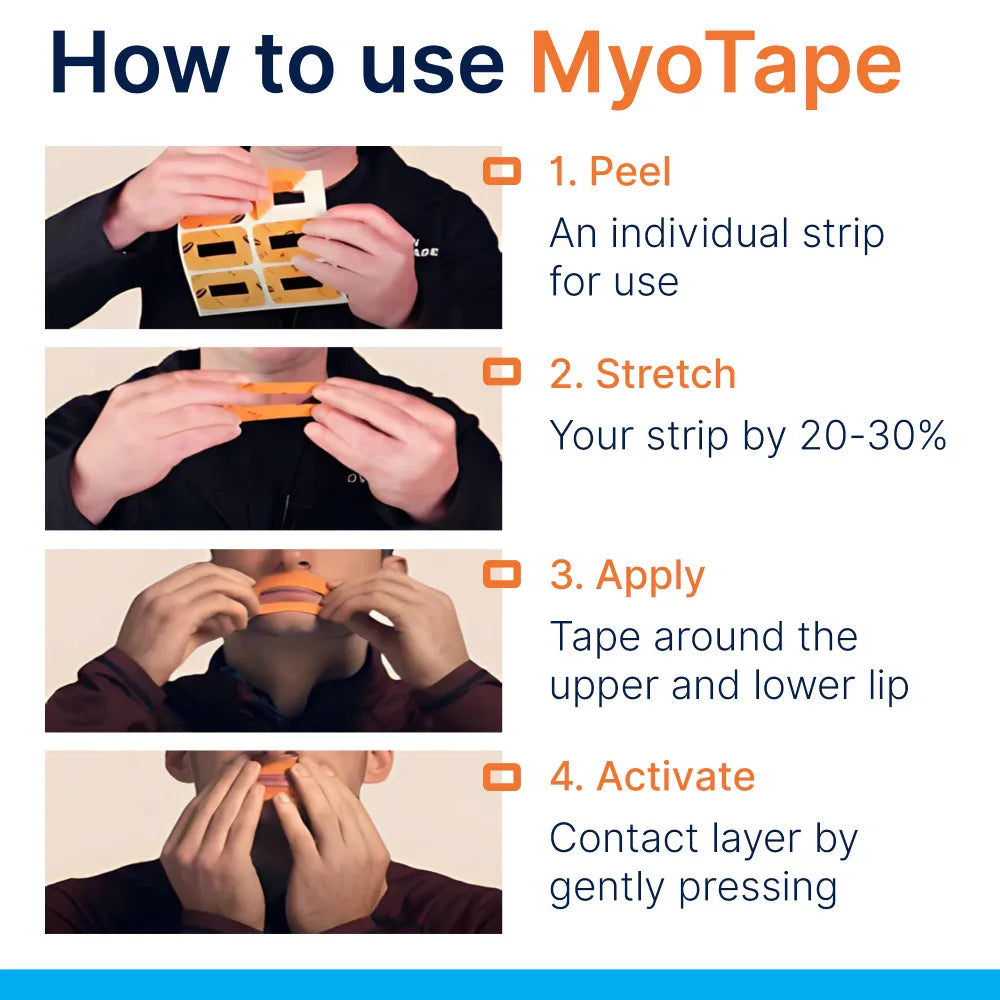
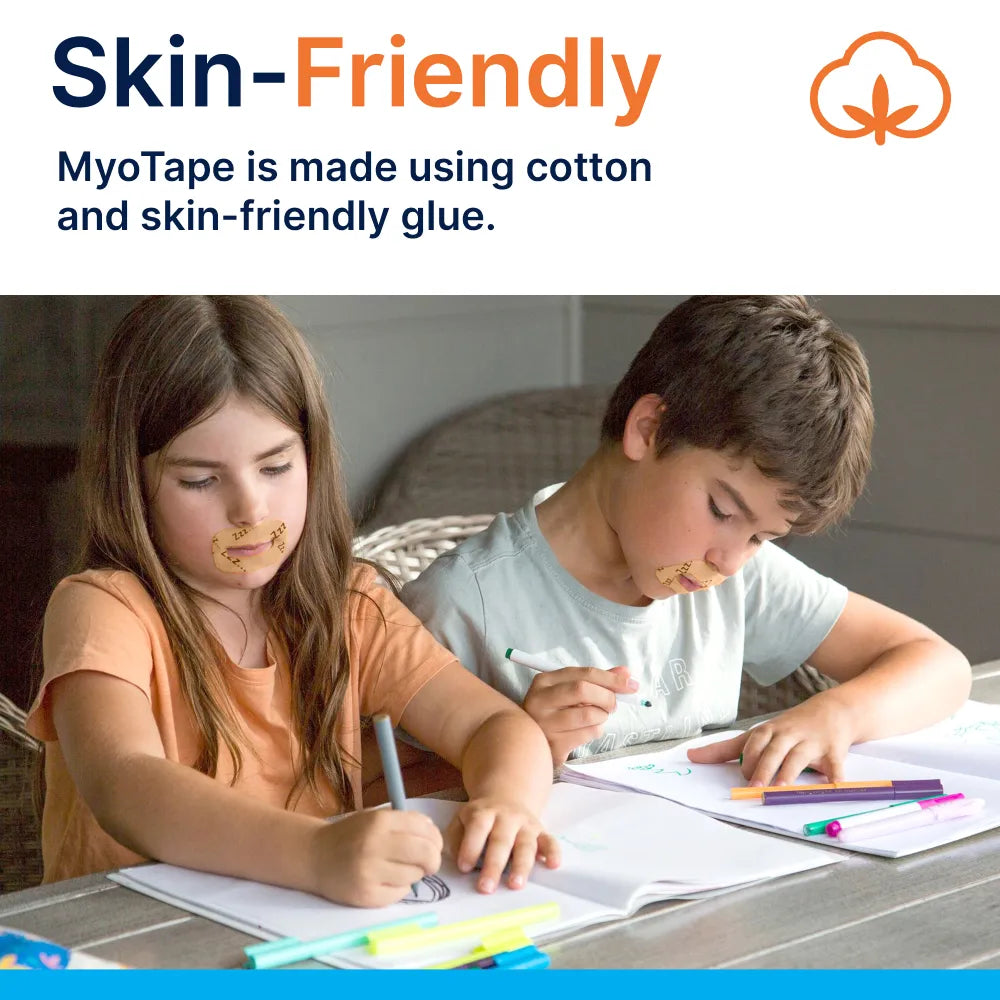










0 comments